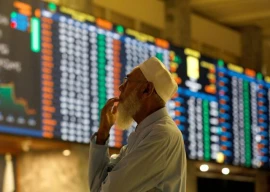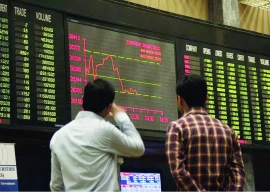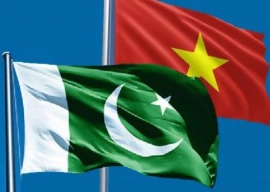
Similarly, the Pakistan Business Council asked for “a fresh industrial policy to promote employment, value-added exports and import substitution”. In fact, there have been many op-eds urging the government to implement a new industrial policy.
Heeding these demands, the government seems to have decided to introduce a 10-year industrial policy. It has tasked the Ministry of Industries and the Ministry of Commerce to come up with a draft by November 30, 2019.
In the previous century, it was common for countries to formulate industrial policies, but now they have gone out of fashion. After much debate on costs and benefits of market versus government failures, most countries have concluded that market failure is less damaging than government failure.
Growth of LSM industries shrinks 3.3% in July
Consequently, the practice of adopting industrial policies has been generally abandoned globally. Pakistan tried to have one in 2011 but after failing to develop consensus on the way forward, the initiative was abandoned.
The industrial policy is a rather flexible term and can be interpreted in a variety of ways. While most governments stopped using the term industrial policy, many do continue to have policies that attempt to “alter the structure of economic activity towards sectors, technologies or tasks that are expected to offer better prospects of economic growth or societal welfare than would occur in the absence of such intervention.”
All the industrial policies that Pakistan has had so far have mostly emphasised on two aspects. The first was to promote import substitution, under which specific sectors (such as auto and sugar) were chosen for protection against imports in order to enable domestic producers to achieve economies of scale without having to compete.
While import substitution has fallen out of favour the world over, the situation is different in Pakistan. Here it has proponents in major industrial houses as well as in the government.
The other major policy tool, which has been widely used by governments in the country, is to give financial support to a few selected sectors such as textile and leather goods. Not only their machinery and raw material are allowed free of duty and taxes (unlike those of the engineering industry), they are also given subsidies on domestic inputs such as energy.
Despite serious financial difficulties and commitment to the International Monetary Fund (IMF) against subsidies, this year the government has approved a gas subsidy for these sectors to the tune of Rs25 billion.
These policies have been disastrous for the country’s industrial development. Protection given to some sectors made them inefficient and rendered them incapable of competing in the global market.
Similarly, financial support for a few low-value products means that resources from elsewhere are diverted towards them and they continue to depend on government handouts. Over time, global production and trading patterns have undergone a radical change. Most countries no longer use these obsolete tools to achieve their goal of industrial advancement.
Pakistan's textile industry faces serious liquidity crunch
If the government of Pakistan is keen on formulating a new industrial policy, it would be best if it were not a repeat of the previously failed ones. There is a need for a radical change in thinking.
It would be best if the government were to look into those areas where we are not aligned with the more successful countries and accordingly change its direction. In particular, the new policy should be made to answer the following shortcomings.
Why is the share of engineering goods in Pakistan’s exports less than 0.02% while globally it is around 50%? In neighbouring India, the share of engineering goods is 25% and these are mostly exported to the United States and Europe.
Why is Pakistan not part of the global value-chain production, which now forms a major share of global exports? How can the government change its policies from encouraging low-value to more value-added products such as machinery and auto parts?
How can the new policy measures discard the current anti-technology bias and encourage, rather than discourage, modern-day production tools such as 3D printers (currently not allowed to be imported)?
Our anti-technology bias is also apparent from the fact that presently we have the highest taxes in the world on mobile phones and on access to data on internet.
How can we emulate countries such as Vietnam? Vietnam’s exports in 1995 amounted to $5 billion, about the same as those of Pakistan that year. Now that country exports more in a month than Pakistan does in a year.
If the new policy could respond to these and other modern trends, then it is worth going for it. Otherwise, having a 10-year policy to keep the current vested interests entrenched would waste another 40 years as has happened in the past.
The writer served as Pakistan’s ambassador to the WTO from 2002 to 2008
Published in The Express Tribune, November 25th, 2019.
Like Business on Facebook, follow @TribuneBiz on Twitter to stay informed and join in the conversation.


















COMMENTS
Comments are moderated and generally will be posted if they are on-topic and not abusive.
For more information, please see our Comments FAQ